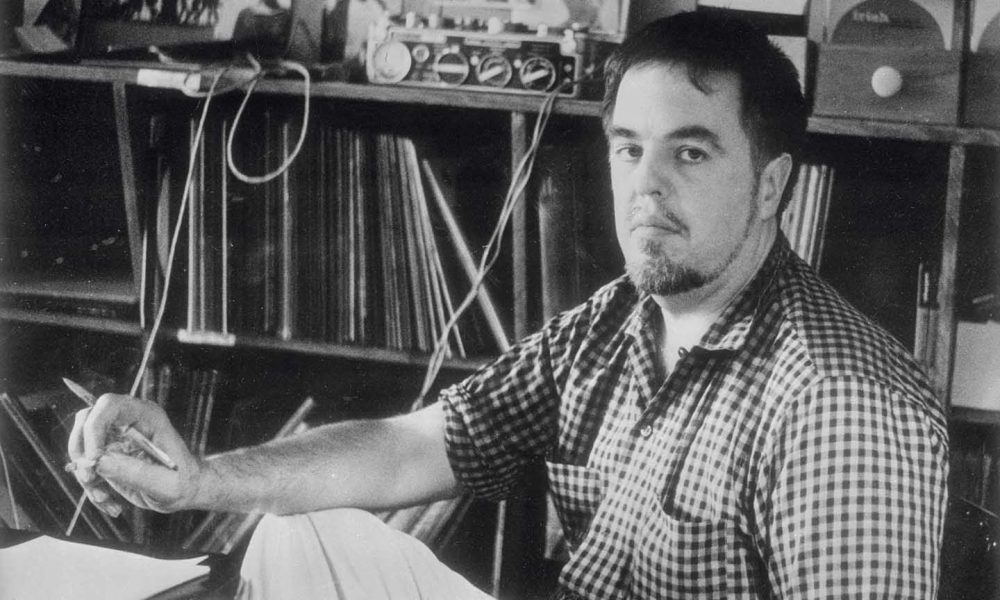The Lomax Legacy: Giving A Voice to the Voiceless
The work of John and Alan Lomax has been pivotal in understanding the history of the blues and its Black cultural offshoots and antecedents.

John Lomax or Alan Lomax are the names that most remember when it comes to collecting recordings of American folk music. But it was Robert W. Gordon that first undertook serious field-recording trips. Using fragile, but portable, cylinder recording equipment, he visited Georgia and North Carolina between 1926 and 1928. In 1928, the Library of Congress decided to establish the Archive of Folk Song and it was these recordings, many by Black men and woman, that were the first in what has become the greatest repository of a nation’s folk music anywhere in the world.
By 1932, however, funding for the project had run out and things looked bleak for the archive, as Gordon could no longer be employed. It was around this time that John Lomax suggested to a New York publisher that he produce an anthology of American Ballads and Folk Songs, an idea that was taken up. An enthused Lomax arranged a field-recording trip to add to his collection of folk material using recording equipment provided by The Library of Congress. In June 1933, John, accompanied by his son Alan, went to Texas.
Born in Goodman, Mississippi on September 23, 1867, John Lomax grew up on the Texas frontier, just north of Meridian. After teaching in Texas, John went to Harvard as a graduate student, returning to Texas in 1909, around the same time he co-founded the Texas Folklore Society. In 1910 he published his first book, Cowboy Songs and Frontier Ballads. He returned to teaching, while continuing to pursue his hobby. In 1930, John’s wife died and his fortunes were at something of a low ebb. He had been bedridden in early 1932 and, as a result, lost his job, which gave him the impetus to embark upon his trip. Alan, one of four children, was born in 1915 and was about to enter his first year of college, when aged 17, he set off with his father on their recording trip.
In his book, Adventures of a Ballad Hunter, John sets the scene: “Stored in the rear of the car were two cots and bedding, a cooking outfit, provisions, a change of clothing, an infinite number of ‘etceteras’ which will manage to encumber any traveler. Later, as a crown to our discomfort, we also carried a 350-pound recording machine – a cumbersome pile of wire and iron and steel – built into the rear of the Ford, two batteries weighing 75 pounds each, a microphone, a complicated machine of delicate adjustments, coils of wire, numerous gadgets, besides scores of blank aluminum and celluloid disks, and finally, a multitude of extra parts.”
In 1933, the duo covered 16,000 miles collecting songs that were integral to the lives of Americans, both Black and white. John managed to convince the academic establishment that they should not just be collecting folk songs of European origin. Lomax wanted to collect vernacular material from every ethnic background, and in particular from Black people. Many of their recordings were made in state penitentiaries and on prison farms, which has subsequently proved to be invaluable in furthering our knowledge of slave songs, and in particular gang work songs. The prison work gangs used songs as a way of keeping time and alleviating the back-breaking work, just as the slaves working in the fields had done.
It was in 1933 that the Lomaxes met Lead Belly in Angola Prison, and assisted in his release. Lead Belly wound up chauffeuring them, as well as helping to persuade prisoners to record. Lead Belly made recordings in various correctional establishments to demonstrate what the father and son song hunters were looking for. By 1934 John had remarried, and his new wife got involved in song collecting, while The Library of Congress employed Alan full time to work on the project. Field trips were made during the remainder of the 1930s throughout the South, along with specific events and artists in some Northern cities.
John and Alan Lomax were not just interested in obscure musicians; they recorded material with some of the key figures in 20th-century music, including W.C. Handy, Jelly Roll Morton, and Son House. Perhaps one of the most famous was a man named McKinley Morganfield. Morganfield would later become the “King of Chicago Blues” as Muddy Waters. He had learned the guitar and harmonica and began playing in juke joints and dances in and around the Clarksdale, Mississippi area from about 1935 onwards.
Among the one-off recording sessions that Lomax undertook was one with the legendary blues and boogie-woogie pianists James P. Johnson, Pete Johnson, Meade Lux Lewis, and Albert Ammons at Havers Studio in New York City on Christmas Eve 1938. A little over a year later Ammons and Lewis would make a series of recordings for Alfred Lion in New York City, which would become the first releases on Blue Note Records.
By 1939, Alan had his own radio show and, when his father retired in early 1940, Alan took over as curator of the collection. After working for the Army during the war, Alan got a job with Decca Records, as well as continuing to collect songs. John died, aged 80, on January 26, 1948, but Alan continued to collect well into the 1950s, as well as working on diverse musical projects.
The work of John and Alan Lomax has been pivotal in furthering our knowledge of the Blues and its Black cultural offshoots and antecedents. As Alan Lomax later wrote, we “added the voice of the common man to the written history of America.”
Follow the A Voice to the Voiceless playlist for more early influential blues recordings.















Staci L Bauer
August 24, 2015 at 3:00 am
Love this site just came across today….Wow impressed!
haruna
August 23, 2016 at 9:31 am
it give us an insight on life at the plantation of former slaves in admixture of life stories
Davemann
August 24, 2016 at 7:14 am
Great article. I didn’t realize where/how/when a lot of these records were done. Adds reality to why the heart and soul feelings come out so strong. That’s Not quite what I was trying to say but y’all prob’ly know what I mean.
uDiscover
August 24, 2016 at 11:43 am
Cheers, Dave